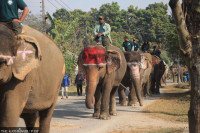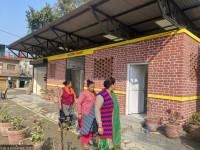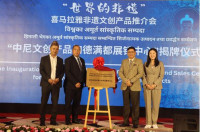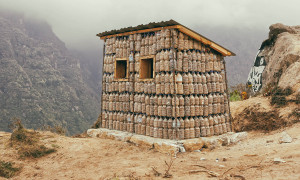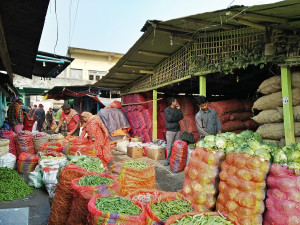Money
Fine rains raise hopes of good paddy harvest
Continuous downpours across the country have brightened prospects for a good paddy harvest this fiscal year after two straight years of poor yields.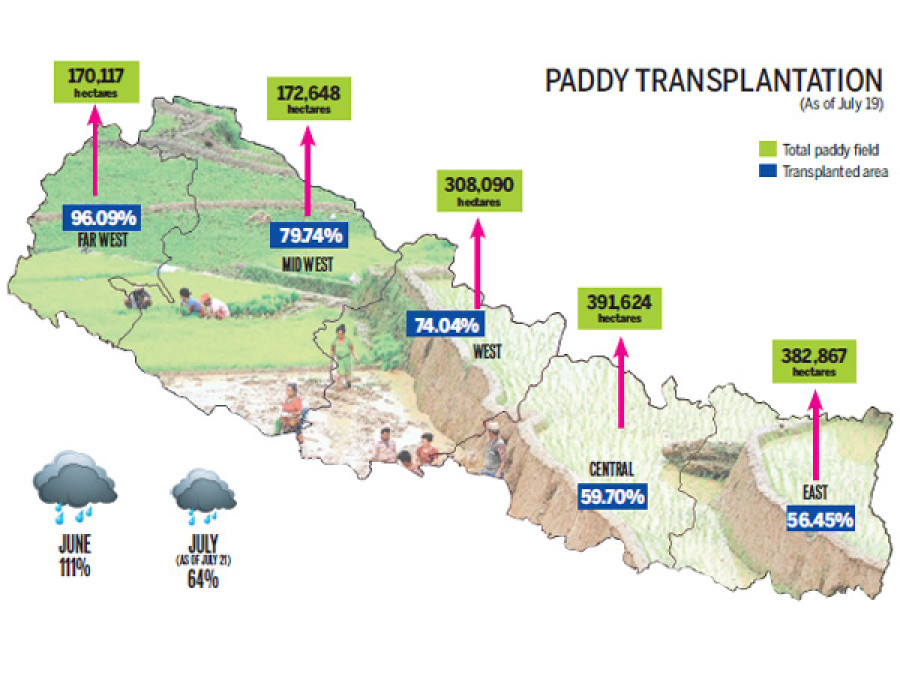
Continuous downpours across the country have brightened prospects for a good paddy harvest this fiscal year after two straight years of poor yields.
As of Monday, farmers had finished transplanting paddy on 69 percent of the country’s 1.42 million hectares of paddy fields against 42 percent in the same period last year, the Ministry of Agricultural Development said.
The ministry said that paddy transplantation had progressed at a faster rate this year compared to the last five years except in a few central and eastern Tarai districts.
Transplantation normally continues till August 15 when the rains are good, so farmers should be able to finish transplanting paddy on the remaining 31 percent of the fields by then.
“After two years of poor rainfall, the monsoon this year has been better than expected. We believe it will improve agricultural output and raise rural incomes,” said Dinesh Bhattarai, chief statistician at the ministry.
Although many areas across the country received heavy rainfall and there was flooding in many places, there have been no reports of major damage in the farm sector, he said. This year, the monsoon entered Nepal on June 15 and covered the entire country by June 20.
Pratibha Manandhar, a meteorologist at the climate section of the Department of Hydrology and Meteorology, said that above-average precipitation was observed in June across the country.
The rainfall in June was 111 percent of normal precipitation this year, compared to 91 percent in the same period last year.
Likewise, July is also expected to see above-average precipitation. “As of July 21, the country observed 64 percent of normal rainfall.”
Last July, the country had observed 73 percent of normal rainfall. Last monsoon (June-September), the country received 76.6 percent of normal rainfall.
The ministry’s statistics show that paddy transplantation has been completed on 69.75 percent of the 58,438 hectares of fields in the mountain region. Transplantation in the hills and Tarai has been completed on 75.70 percent of 382,569 hectares and 65.91 percent of 984,339 hectares respectively.
The Tarai, which is the largest paddy producing region in the country, accounts for 71 percent of the total rice acreage. The hills account for 25 percent and the mountain region 4 percent.
In terms of geographical distribution, the Far Western and Mid-Western regions saw the highest transplantation rate.
According to the ministry, transplantation in the Far Western Region has been completed on 96.09 percent of the 170,117 hectares of paddy fields.
Transplantation in the Mid-Western and Eastern regions has been recorded at 79.74 percent of the 172,648 hectares and 56.45 percent of the 382,867 hectares of paddy fields.
Similarly, transplantation in the Western and Central regions has been completed on 74.04 percent of the 308,090 hectares and 59.70 percent of the 391,624 hectares.
Last year, 9 percent of the country’s total rice fields were left unplanted due to a poor monsoon. The statistics show that transplantation has been completed in Kanchanpur, Bajhang, Dolpa, Humla and Jumla districts.
Siraha, Saptari, Sarlahi and Mahottari districts saw a poor transplantation rate this year
too. Transplantation in Siraha
and Saptari districts has been recorded at 18 percent and 25 percent respectively.
Likewise, transplantation in Sarlahi and Mahottari has been recorded at 35 percent and 40 percent respectively. Manang and Mustang are the only two districts where paddy is not grown among the 75 districts in the country.




 7.12°C Kathmandu
7.12°C Kathmandu
